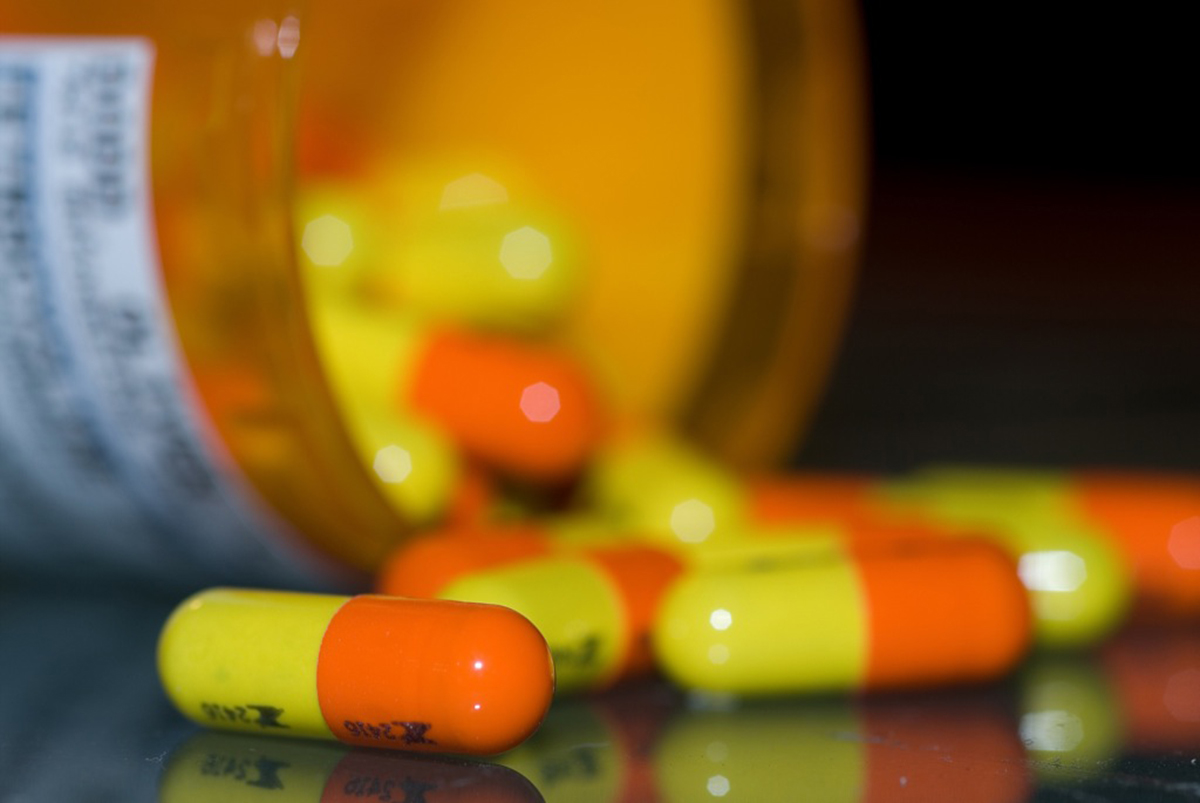By the time 18-year-old Aaron Young wound up at Ronald Reagan UCLA Medical Center in Los Angeles in October of 2014, he had made multiple trips to the emergency room for treatment of excruciating abdominal pain. Doctors diagnosed him with pancreatitis, and ordered what is ordinarily a low-risk procedure involving the placement of a scope down the throat to remove an obstruction of the duct that allows the pancreas to release its digestive juices into the small intestine.
Instead of getting better, unfortunately, Young quickly developed a persistent 104-degree (40 degrees Celsius) fever. He only recovered from the infection after another three months in the hospital, but not long after he got out he had to have another procedure for pancreatitis. His infection flared up again, and he had to spend another day in the hospital for his underlying problem and another month in the hospital for the infection he picked up during the second procedure.

Young was just one of seven patients at UCLA to come down with a superbug infection after being treated with the same instrument. Two of the other patients died. Dozens more patients at UCLA had to be monitored for months to make sure they did not also come down with these antibiotic-resistant infections.
Superbug Infections Across the United States
All the patients like Aaron Young, it turned out, were not at UCLA. Shortly after Young was released from the hospital for the second time, another hospital Cedars-Sinai, also in Los Angeles, announced that four patients there who had undergone the same procedure had been diagnosed with the same germ that the seven UCLA patients had, a drug-resistant form of carbapenem-resistant Enterobacteriaceae, or CRE.
Then Hartford Hospital in Connecticut, on the other side of the country, announced that 282 patients undergoing the same procedure with same kind of instrument had been exposed to an antibiotic-resistant form of E. coli.
A Scandal Leads to a Congressional Investigation
The three outbreaks of superbugs in three hospitals known for high standards of care triggered a Congressional investigation. When the FDA was ordered to take a closer look at the outbreaks, an even more disturbing pattern emerged.
These three incidents involving nearly 300 people were hardly the only superbug outbreaks. A similar problem appeared after use of the device at the Virginia Mason Medical Center in Seattle, where 32 patients became ill and 11 died in 2012. Also since 2012, a total of 44 patients have caught superbug infections after use of the device at Advocate Lutheran General Hospital near Chicago. The Veterans Administration had been aware of the problem in its hospitals since at least 2011.
READ Superbug Clostridium Difficile About to Overtake MRSA in Hospitals
Altogether, more than two dozen hospitals in the United States and Europe had the same kinds of problems with the same kind of instrument, but nobody noticed a trend until the cases in Los Angeles and Connecticut were reported by the news services. The medical profession has been aware of problems with the device since 1987, when 10 patients in a Minnesota hospital treated with the same device came down with an infection with a kind of bacteria known as Pseudomonas. A Congressional hearing resulted in a finding that hospitals had been negligent in letting other institutions know of the problem and in a demand that the FDA take forceful action. However, the FDA concluded that taking the medical scope used to do the procedure off the market immediately would result in even more deaths than are caused by superbugs.
What's the Device That Is Exposing So Many People To Superbugs?
Every year, half a million people in the United States and another half a million people in Europe have procedures with a $40,000 device called an endoscopic retrograde cholangiopancreatography duodenoscope. The purpose of this device with the impossibly long name is to locate tumors, gallstones, and other digestive obstructions in a minimally invasive way. It's passed through your mouth, your throat, and your stomach, to your duodenum, the first part of your small intestine.
As a "scope" it can be used to take a look at the small intestine or the vessels that drain into it. Both the liver and the pancreas excrete digestive juices into the small intestine. Your liver makes bile to dissolve cholesterol and fat. Bile passes is released by the gallbladder through the bile duct into the Ampulla of Vater into this part of your intestines. Your pancreas releases insulin into general circulation, but it makes digestive juices that also travel into the small intestine. These juices pass through the pancreatic duct also into the Ampulla of Vater and into your small intestine. These passages can be blocked by gallstones, by tumors, and by other conditions, which can repaired at the same time the surgeon is taking a look at the problem.

The device is "retrograde" so it can back up into the ducts through an elevator mechanism to remove obstructions, in addition to providing the doctor with images of the inside of your intestine. The advantage of having a retrograde scope is that the doctor doesn't have to do one procedure to look at your ducts and then another to repair them. The same scope can be used for both examination and repair in the same session. Of course, if all this is a too much to take in, just thing of an endoscopic retrograde cholangiopancreatography duodenoscope as a device that does something like a colonoscopy, only through your mouth.
Although duodenoscopy is not exactly a pleasant procedure, it doesn't require general anesthesia or a deep incision through layers of tissue. The patient is taking to a lab, given a sedative and a pain killer, and the procedure is over in an hour or so. It's not completely painless, but the recovery time is relatively quick, just a day or two, that is, assuming there are no complications.
Compared to other endoscopic procedures, endoscopic retrograde cholangiopancreatography duodenoscopy carries a higher risk of bleeding or organ injury. The bigger problem is that in even more cases,as previously mentioned, the procedure is associated with potentially dangerous infections. What can ordinary patients do?
- First of all, don't put off the procedure because you are afraid of superbugs, but if you are able, don't hesitate to ask your doctor questions about what the hospital does to make sure it is safe.
- Secondly, if you develop a fever, contact your doctor immediately, but don't panic. Don't go to an emergency room unless you have to. You don't want to spread the infection, and you don't want to pick up yet another infection in the ER. You may need to have your primary care provider admit you directly to the hospital.
- Realize that your initial treatment will be with broad-spectrum antibiotics. This is because it takes 72 hours for cultures to grow so that the lab can tell which germs are causing your infection. Your doctor will want to cover all the possibilities while waiting for lab results that allow taking you off some of the antibiotics.
- When you are discharged, take all the antibiotics you are prescribed. You don't want a flare up of the infection, which is possible even you aren't exposed to it a second time.
READ "Super Honey" Beats Superbugs: Hype Or Reality?
Chances are that if you have a condition that calls for the use of this device, you will be in severe pain. You will want treatment. There is still lower risk of death from antibiotic-resistant infection than there is from not getting the treatment you need.
- Brady Dennis. Company to recall, redesign medical scope linked to ‘superbug’ outbreaks. Washington Post. 15 January 2016.
- Brady Dennis. Widening superbug outbreak raises questions for FDA, manufacturers. Washington Post. 15 March 2015.
- Photo courtesy of practicalcures: www.flickr.com/photos/practicalcures/23306185171/
- Photo courtesy of oliverdodd: www.flickr.com/photos/oliverdodd/3831365675/


Your thoughts on this